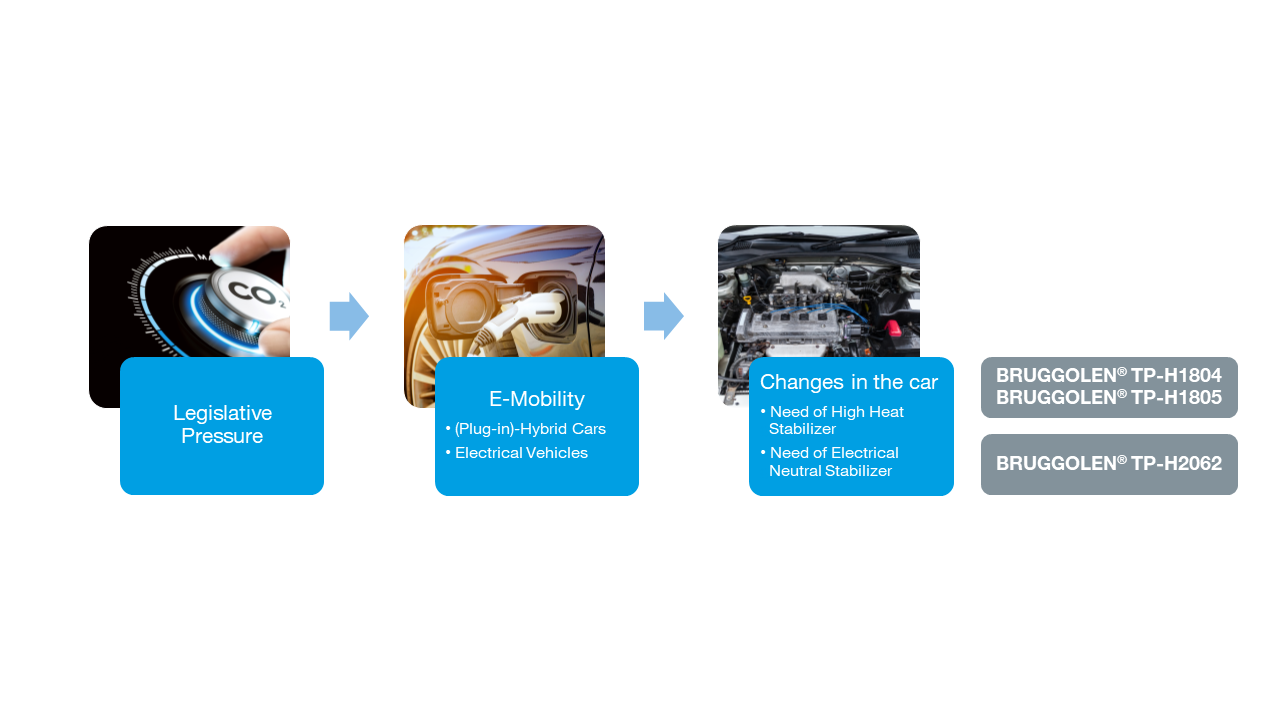Until recently under-the-hood plastics parts could be satisfactorily stabilized by additives that functioned at peak temperatures of up to 180°C. Supplying anti-oxidants here is a mainstay of Brueggemann’s business. Today’s smaller but more powerful engines, through their use of turbochargers, have seen components exposed to 210°C peak levels. In order to meet these requirements Brueggemann has developed BRUGGOLEN® TP-H1804 and BRUGGOLEN® TP-H1805. The former bridges the gap between 180°C and 200°C whilst the latter allows a typical polyamide component to be stabilized above 200°C. Prior to these products, the higher temperatures could only be met with polymer modifications such as polyphtalamides. These are not only much more expensive but were also only supplied by the resin suppliers themselves and therefore very often not available to our main customer base, the independent plastics compounder.

The transition to e-mobility brings with it another problem: Typical antioxidants that are used in electrical applications have significantly poorer heat storage properties in temperature ranges above 120 °C, and continue to diminish further above 150 °C. High temperature antioxidants contain metals and halides which can trigger electro corrosion at junctions of electrical components thus shortening their useful life. The challenge faced by Brueggemann’s product development and applications laboratory team was to develop a stabilizer that provides the necessary temperature protection without any further drawbacks like electro corrosion. The new metal and halide free BRUGGOLEN® TP-H2062 does just that with the added benefits of being especially dust free and having superior polymer dispersibility.
Through its state-of-the-art responses to the needs of the marketplace, Brueggemann continues to be an invaluable partner to its customer base and makes some of the innovations being introduced by E-mobility possible.